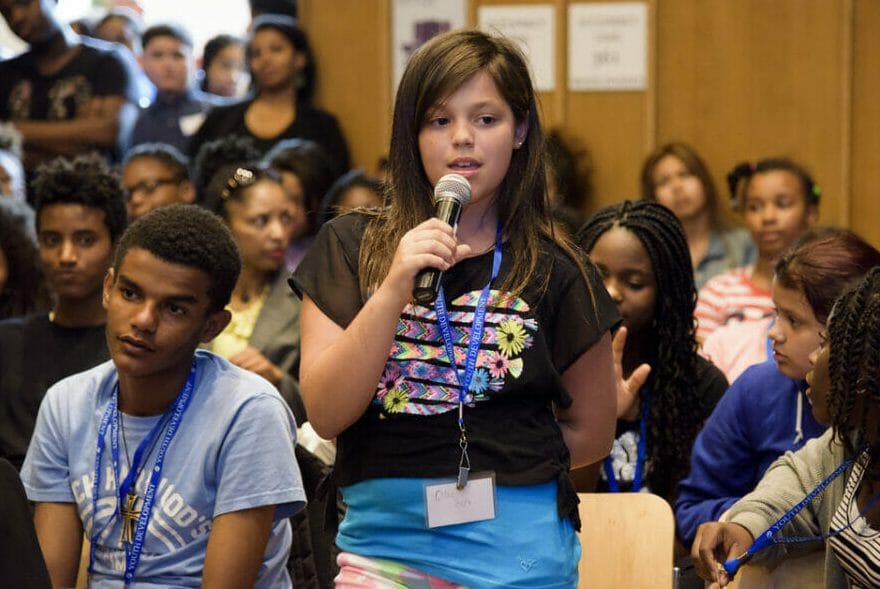 This is the third part of a series of posts about acceptance through the story of Mel, a fascinating life coaching client of mine. To know a bit about Mel and how this story started, read Monday’s post, Acceptance (1). For a description of Mel’s views on life that made her miserable, read Wednesday’s post, Acceptance (2).
This is the third part of a series of posts about acceptance through the story of Mel, a fascinating life coaching client of mine. To know a bit about Mel and how this story started, read Monday’s post, Acceptance (1). For a description of Mel’s views on life that made her miserable, read Wednesday’s post, Acceptance (2).
Today, I would like to introduce a solution, a cure, a way out of this endless search for the right and only-sensible thing to do, to think or to be. If you are like Mel in some way, I hope this will help you find peace, just as she did. If you know others like Mel, I hope you will share this series of posts with them so they may find their own peace.
The first step toward change is awareness.
The second step is acceptance
– Nathaniel Branden
Every time Mel left, I wrote my reflections on the session, as I always do after a session. In the Strategies section, I wrote, “Teach acceptance”. For me, acceptance was a peaceful place, where I acknowledge things around me without resistance (every time I think of the word “resistance”, I remember The Borg from Star Trek saying, “Resistance is futile”. Sometimes it is useless and ends only in sorrow).
Mel thought acceptance was a form of giving up. “Do you accept wars?” she asked me (she knew how to press my buttons).
I said, “I do. I acknowledge the fact that there are wars. It does not mean I am happy about them, but they are part of life”.
We cannot change anything until we accept it.
Condemnation does not liberate, it oppresses
– Carl Jung
Three stages of acceptance
Although the idea of acceptance seems simple, it has more than one meaning. I find a common thread between them, which is “without resistance”.
The three meanings I could think of were:
- Acknowledgment or act of belief – “I accept the facts” (I believe they are true, “I believe in God” (I accept the idea or concept of God)
- Willingness to receive – “I accept this award”, “Thank you for your gift”
- Agreement or approval of someone or something – “I accept the terms of the contract”, “I accept him into the club” (team, company, etc)
I believe that acceptance is a process going through all the three meanings. I call them The Three Stages of Acceptance.
Letting go does not mean giving up, but rather
accepting that there are things that cannot be
– Unknown
Acknowledgment
 Acceptance starts by acknowledging what is inside of me and what is outside of me. The first level of the emotional intelligence is “Recognizing my own feelings”. The first level requires no action, just awareness and acknowledgment of the feeling – “I’m sad”, “I’m happy” or “I’m frustrated”. It may be surprising for you, but most people do not know how they feel, because they have never learned to recognize their feelings.
Acceptance starts by acknowledging what is inside of me and what is outside of me. The first level of the emotional intelligence is “Recognizing my own feelings”. The first level requires no action, just awareness and acknowledgment of the feeling – “I’m sad”, “I’m happy” or “I’m frustrated”. It may be surprising for you, but most people do not know how they feel, because they have never learned to recognize their feelings.
Recognizing our feelings is an important skill and in our stressful lifestyle, it is even more important. It is very important to distinguish between expressing feelings and recognizing them, because they do not necessary go together. Kids, for example, find it easy to express their feelings, but hard to recognize them, because of a limited vocabulary and few life experiences. They can be angry, joyful or excited, but when you ask them how they feel, they may not really understand what you are saying.
Unfortunately, if kids are not taught to recognize their feelings, they grow up to be adults who do not know how they feel and therefore cannot manage their emotions.
A big obstacle to acknowledgment of hard thoughts, feelings or facts is called denial. Denial is a chemical reaction in the brain that functions as a defense mechanism. It pushes a way thoughts and feelings that we may not be able to handle.
I remember the first time I realized this defense mechanism was taking over my thoughts. I was a special education student and I asked for a six-month practice assignment at a school for autistic children. The first day I came for a visit was a shocking experience. The kids at that school were severely autistic and the teachers in the kindergarten where I worked monitored every word they said. I was there for a full day and the kids only said about 50 words. Those kids were so beautiful and so “not there”.
Two days later, Gal asked me about something I did and I remembered I had been there. In my mind, that day had disappeared, as if I had been unconscious the whole time I was there. My memory was still fuzzy and I only had flashes of what had happened there, but slowly they became clear. I forgot the day, erased it as if it had never happened and I do not think I did it consciously at all. My brain was taken over.
Denial is a natural reaction to hard things, but it is an act of resistance. Acknowledgment is the cure.
When we lived in Thailand, I bought Gal a meditation book he read on his way to work (his driver was driving). One of the exercises was to sit while being hungry, feel the hunger and not resist it. The theory behind it was that hunger was a “small Panic attack”, a survival instinct, which we do a lot to resist. Yet, if we acknowledge the feeling, experience it and embrace it, the panic disappears.
Many times, when we accept the facts and do not argue with them, we find peace. In her book “Love what is” (highly recommended!), Byron Katie uses the technique of acknowledgment as a cure. She takes people through the process of examining their expectations and shows them that the more they focus on the expectation, the less accepting they are of the facts.
The wonderful process of acceptance or “loving what is” shows people that their attachment to a particular outcome is the source of their misery. In the same way, if your partner, child or boss is doing something you are unhappy about, you have proof he is doing it. The problem is not his behavior but your expectation that he will behave differently.
“If your students cannot understand, then you have proof they do not understand. Why do you fight reality?” I asked Mel, “Would it not more useful to change your assumptions and help them where they are?”
Resistance is futile. Acceptance is the cure!
Willingness to receive
 When we acknowledge the fact and the feelings, we can progress to the willingness to receive. As you probably understand, the opposite of receiving is rejecting, which is a form of resistance. When we are given something, we have the power to receive or reject it. Our mind, much like with acknowledgment, rejects ideas, facts and people that seem to be a threat.
When we acknowledge the fact and the feelings, we can progress to the willingness to receive. As you probably understand, the opposite of receiving is rejecting, which is a form of resistance. When we are given something, we have the power to receive or reject it. Our mind, much like with acknowledgment, rejects ideas, facts and people that seem to be a threat.
The challenge is that often the perception of threat is not clear enough. While in the distant past, the flight and fight response was very effective and helped humans survive, today, a word someone says can be as threatening as a lion and a gesture can create the same reaction as a thunderstorm. Most people are in a constant state of stress, which means their body thinks it is under some kind of a threat all the time.
Mel was under a constant threat. Everything she did not understand seemed like a threat to her and took her into the prehistoric jungle of life – fearing predators, thunderstorms and fire. Yet, under threat, she could not recognize good intentions and her mind was too busy to see a way out.
One form of resistance to receiving is avoidance and its source is the perception of threat. Mel avoided making decisions, because in her mind, doing something, saying something or thinking something might lead her to compromise and that was a threat – it triggered her allergy to mediocrity.
 Resistance and rejection take a lot of energy and can be very exhausting. It is like the difference between wrestling and dancing – you need a partner in both, but in wrestling, you need to make sure not to get hurt, while in dancing you focus on having fun.
Resistance and rejection take a lot of energy and can be very exhausting. It is like the difference between wrestling and dancing – you need a partner in both, but in wrestling, you need to make sure not to get hurt, while in dancing you focus on having fun.
Receiving works great without judgment. Acceptance without judgment is like getting a wrapped gift and not knowing what it is. Basically, you accept the idea of the gift – the intention – and take it willingly and without judgment.
Life is the same. When things happen to us, they wrapped gifts. Some wraps look beautiful on the outside, but when you open them, you find little value inside. Other wraps look dull on the outside, but their value is high. Still, we need to receive both kinds in order to find out what they are.
If the first stage (acknowledgment) is the statement “I’m aware this is what is happening to me”, the second stage (willingness to receive) is allowing what happens to enter my life without grading it.
For Mel, reaching this second stage meant accepting that people were different without judging whether it was good or not, which meant she could no longer hold her definitions of “fairness” or “mediocrity”. She accepted that there were many possible definitions and perceptions and that hers were subjective. The biggest thing she got from reaching this stage was peace. She no longer had to put a label on whatever she did, thought or felt and on what others did, thought or felt. It was just “the way things are”, “reality”, “life”.
At that stage, she asked me if that was the reason we had “Be” in “Be Happy in LIFE”, because accepting things as they are, accepting myself as I am, was moving to a state of “being”.
Agreement or approval
Acceptance of what has happened is the first step to overcoming the consequences of any misfortune
– William James
Reaching the second stage of acceptance can bring most people great peace. When you reach it, you feel like you have just finished a serious workout. Things are easy and light.
I remember having this feeling when we moved to Singapore after a year and half in Thailand. There was air conditioning everywhere, the streets were clean, the system was effective, the roads were free from traffic jams and I could order food in English. I had loved Thailand, but after about 4 weeks in Singapore, I discovered Thailand had been hard work (in some respects).
 If you want, you can settle on this stage and be happy for the rest of your life, but as you might have guessed, Mel could not settle for it, which made me go with her to the third stage of acceptance – agreement or approval.
If you want, you can settle on this stage and be happy for the rest of your life, but as you might have guessed, Mel could not settle for it, which made me go with her to the third stage of acceptance – agreement or approval.
The third stage of accepting happens after opening the gift when you look at whatever is under the wraps and believe it is good for you somehow. It is this “All good” attitude.
Usually, when things happen around us, we do not have a problem if we immediately perceive them as beneficial for us. The problem is always when we first open the gift and find something that seems like a threat. Initially, it feels like an insult to accept things without judgment and then discover they are going to hurt us in some way.
Mel said to me, “If I accept something without judgment and then find out it was painful, I will doubt my ability to judge in the future. I can’t trust my judgment anymore”.
“You only need judgment to be able to predict the future, but we have already concluded you were not a fortuneteller, so why fight it?” I asked her.
We must accept life for what is actually is – a challenge to our quality, without which we should never know of what stuff we are made or grow to our full stature
– Ida R. Wylie
Various religions manage this level in a great way. They have solved the problem of dealing with seemingly painful things by accepting our inability to make sense of things because of our limited understanding. These religions explain things as part of a greater plan that is beyond our capacity to comprehend, so whenever things hit hard, believers accept that a mighty power has everything figured out and this power always chooses what is best for us.
When we open a gift and its value is low or negative, we need to find the good intention or purpose behind it by asking, “How can I benefit from this pain?” This is the reason religious people deal with difficulties and grief better. Jewish mysticism is called “Kabala”, which literally means “Acceptance” or “Receiving”, and I think it is called that because acceptance is considered the highest form of existence.
 Other life philosophies do not accept a universal power, but they still promote the belief that things are painful or threatening only when we cannot found a way to turn them into strengths and realize their benefits.
Other life philosophies do not accept a universal power, but they still promote the belief that things are painful or threatening only when we cannot found a way to turn them into strengths and realize their benefits.
When I told Mel that one of the gifts I had received was the loss of my two children, she looked at me with anger at first. I offered her something that seemed like a huge threat – no good could possibly come out of losing two kids. Yet, there I was and when I stopped fighting and resisting and accepted my loss, I was able to ask myself that question until the answer came.
When things hit you hard, accept the belief that you have the power to find some good that will come out of them, agree to search for it and when you find the answer, there will be no more pain. There will only be good.
I hope you will learn from Mel as much as I have.
I wish you a happy and fulfilling life with lots of acceptance.
Hugs,
Ronit
This post is part of the series Acceptance:
- Acceptance (1)
- Acceptance (2)
- Acceptance (3)











